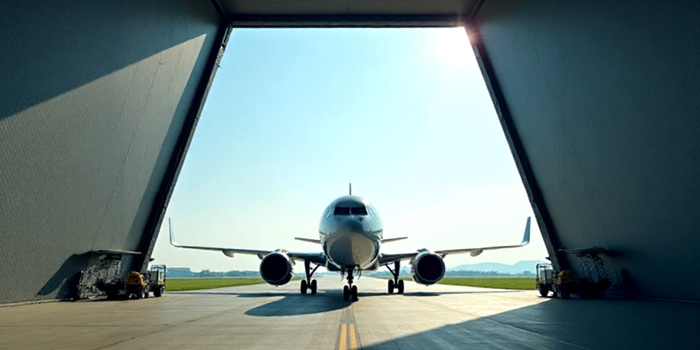Democratizing Air Access: Leasing As the Key to Regional Growth
01 Oct 2025
Highlights:
Air transport is more than a means of travel — it is a catalyst for economic transformation. By opening trade corridors, unlocking tourism potential, and connecting communities, it drives GDP growth and job creation. Yet for many airlines in Africa, Southeast Asia, and Latin America, the cost of acquiring new aircraft outright remains prohibitive.

In these markets, aircraft leasing is emerging not just as a financing option but as a strategic enabler. Properly structured, leasing can reduce the financial barriers to entry, accelerate market expansion, and allow carriers to test and scale routes without committing to long-term, capital-intensive investments. The question is whether leasing could be the single most powerful tool in “democratizing” access to air transport in emerging economies.
Why Leasing Matters for Emerging Markets
Leasing offers a pathway to growth by lowering upfront capital requirements, improving fleet flexibility, and enabling faster route deployment. In environments where access to capital markets is constrained and lenders are cautious about aviation exposure, structures such as operating leases, wet/damp leases, and sale-and-leaseback arrangements allow airlines to expand capacity without overburdening their balance sheets.
Global demand for leased aircraft is accelerating. Precedence Research projects the aircraft leasing market will reach USD 397.21 billion by 2034, with growth heavily driven by Asia and other emerging economies. This demand is underpinned by three key trends shaping the future of leasing in these regions.
Trend 1 — Expanding Financing Models
Traditionally, leasing in emerging markets centred on dry leases and sale-and-leaseback deals. Today, more innovative structures are coming to the fore:
- Short-term wet/damp leases to cover seasonal peaks or bridge temporary fleet shortages.
- Flexible operating leases with adjustable terms and early-return options to mitigate risk for lessees.
- Structured finance products, such as asset-backed securitisations, that package leased aircraft for institutional investors.
- Local-currency pricing and blended finance solutions combining export credit or concessional funding to lower costs for airlines vulnerable to exchange rate fluctuations.
These models are helping carriers align capacity with demand while managing revenue volatility — a critical capability in markets exposed to political, economic, and currency instability.
Trend 2 — Policy and Legal Frameworks Are Gatekeepers
Investor confidence in leasing depends heavily on legal certainty, particularly regarding asset repossession. India’s 2025 legislation implementing Cape Town Convention protections is a case in point. By strengthening lessor rights, the law is expected to lower leasing costs and attract more market participants.
Conversely, jurisdictions with unclear or inconsistent repossession processes tend to see reduced leasing availability and higher financing costs. Clear, internationally harmonized regulations directly translate to more competitive lease terms and broader access to aircraft.
Trend 3 — Supply Constraints and Competitive Demand
OEM delivery backlogs and persistent engine maintenance bottlenecks have tightened aircraft supply. For emerging market airlines, this means that lessors — positioned between manufacturers and operators — can command higher lease rates and choose lessees more selectively. As flagged in industry reports and at recent finance summits, competition for available aircraft is likely to intensify through 2025 and beyond.
Regional Perspectives
Africa: Airlines depend on leased narrowbodies and regional jets to connect smaller cities and foster point-to-point travel. However, challenges such as currency volatility and modest market sizes still limit investor appetite. Blended finance and credit enhancement tools are showing promise in de-risking exposure for institutional investors.
Southeast Asia: Rapid passenger growth and the rise of low-cost carriers keep demand for leased aircraft high. Local legal reforms, coupled with significant fleet orders, have made the region increasingly attractive for long-term lease placements.
Latin America: A diverse mix of legacy carriers and agile low-cost airlines are turning to leasing for cost-effective fleet renewal. Economic volatility and currency risk often lead operators to favour short- to medium-term leases and sale-and-leaseback transactions to preserve flexibility.
Is Leasing the Key?
Leasing alone can’t solve the connectivity challenges of emerging markets, but it can be a powerful accelerator. When combined with supportive regulatory environments, local-currency financing, and public-private risk-sharing initiatives, leasing can significantly expand air access — particularly to secondary cities where the economic uplift can be transformative.
Success will depend on coordinated efforts between governments, regulators, and industry players to create predictable, transparent, and investor-friendly leasing ecosystems.
How AviaPro Helps
AviaPro Consulting Inc. partners with governments, air navigation service providers, and airlines to turn aircraft leasing into a powerful driver of connectivity and growth. We align legal and regulatory frameworks with global best practices, ensuring lessors have the confidence to invest. Our financing strategies are designed to meet each client’s realities, combining lease-versus-buy analysis, blended finance solutions, and targeted investor engagement to secure the right aircraft at the right terms.
From market studies and route planning to transaction management and negotiations, we guide stakeholders through every stage of the leasing process. We also strengthen in-house capabilities through training on lease accounting, asset management, and lifecycle cost control. By combining deep technical expertise with strategic vision, we make leasing more than a transaction: it’s a strategic opportunity for expanding connectivity, stimulating economies, and creating pathways far beyond major hubs.
Facts & resources
Key sources used in this article:
- Market & sector overviews: Precedence Research — Aircraft Leasing Market Size to Hit USD 397.21 Billion by 2034. Precedence Research
- Industry trend analysis: Icarus Fund — Aircraft Operating Lease Trends in Global Leasing Market 2024. Icarus Fund
- Commercial finance outlook: Boeing — Commercial Aircraft Finance Market Outlook (CAFMO). Boeing
- Regulatory development: Reuters — India passes bill to protect aircraft lessors (Cape Town Convention implementation). (Apr 3, 2025). Reuters
- Lessors & market dynamics commentary: KPMG / Aviation Leaders Report 2024. KPMG
- Regional financing perspectives: ACC Aviation — Aviation Financing in Africa. accaviation.com
AviaPro Newsroom
+1 416-544-9969
info@aviaproconsulting.com

Editorial Contacts